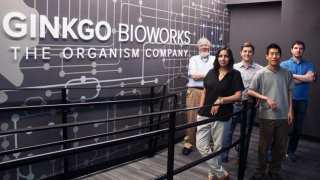The paper ‘Ten Challenges in Highly-Interactive Dialog Systems’ was presented by Nigel G. Ward, from the Department of Computer Science, University of Texas, and David DeVault, from the Institute for Creative Technologies, University of Southern California, at the 2015 AAAI Spring Symposium in Stanford, CA. These ten challenges were summarized under the following three general categories ‘Towards More Power and Robustness’, ‘Towards Reduced Development Costs’ and ‘Towards Deeper Understanding’.
Salient Features & Observations from the Study
The challenges presented related to the goal of ‘Reduced Development Costs’ involve further research in the field of unsupervised learning, and the use of different collections of texts for testing developing applications (corpora). In regard to the latter, ‘Compositional Behavior Specification,’ proposes the building of “interactive systems from more general conversational skills, as reusable components,” based on the composition of behaviors learned from different corpora, thus increasing re-use and reducing development costs. Reduced development costs may result in a higher production and greater variation of dialog systems targeted to different user groups. The proposed reusable components of the dialog system are independent from the policy chosen for dialog modeling of the system concerned.
Linguistic aspects and user requirements become increasingly important in regard to the challenges labeled as ‘Towards More Power and Robustness’ and ‘Towards Deeper Understanding’ especially in the case of dialog systems and other related applications to be used by an international public. Additionally, research and empirical data targeting the development of dialog systems for the international public may actually also contribute to meeting the goals of the ‘Towards More Power and Robustness’ and ‘Towards Deeper Understanding’ challenges.
The international public as a user group, is characterized by diverse linguistic and cultural backgrounds which influence user behavior and user interaction, especially in dialog systems intended not for professionals, but for a broader user group. A multilingual Human-Computer Interaction (HCI) System for the international public involves the integration, or adaption, of linguistic aspects as well as cultural aspects of the different languages concerned. This of course results to an increase of the degree of complexity. Each natural language used is related both to the linguistic features of the actual language and to the socio-cultural features of its native speakers. The cultural aspects mostly concern User Modeling, which may be labeled as Factor 1. The linguistic aspects concern the semantic content of the written or spoken utterances in System-User Interaction, labeled as Factor 2. For applications such as multilingual dialog systems or other forms of multilingual HCI Systems, the linguistic aspects involving the factors Speech Acts and Dialog Structure (Factor 3) and Prosody/Tone or Style of voice (Factor 4) constitute a basic element in the System’s structure and performance.
Input from a variety of resources and user groups (Factor 1), including the international public, may contribute to meeting the challenges ‘Improving on Human Performance’ presented as Challenge 1 and ‘Modelling Variation’ presented as Challenge 2. The ‘Modelling Variation’ Challenge as described by Ward and DeVault 2016, concerns the ‘design of a family of systems, with the same basic functionality but with different personalities or behavior styles that can be used for users of different types or preferences’. The desired ‘more research in interaction styles’ also implies more research in linguistic aspects and User Requirements. The factors of linguistic aspects and user requirements are equally important for the ‘Improving on Human Performance’ challenge, contributing to the identification of the human cognitive limitations and to the proposed selection of the very best interaction patterns.

The field of human-computer interactions (HCI) has come a long ago, over the last few decades. In this study, spearheaded by researcher Nigel Ward, the challenges that can help provide a better insight into highly-interactive dialog systems have been discussed. (Source: Prasanna Pandey @ deerwalk)
Empirical linguistic analysis focusing on interaction patterns, behavior and speech from an international public may enrich existing spoken text corpora and reinforce existing models, especially in regard to the following challenges: ‘Using Multifunctional Behavior Specifications’ ‘Synthesizing Multifunctional Behaviors,’ ‘Integrating Learned and Designed Behaviors’ and ‘Continuous State Tracking’.
The challenge relating to Multifunctional Behavior Specifications targets system builders going beyond what the authors call “narrow tracks of interaction” — leading towards richer and more realistic models of interactive behaviors for their systems. The ‘Synthesizing Multifunctional Behaviors’ Challenge targets the correct decision-making, management and processing of input types that may correspond to different functions, such as the case of multiple prosodic patterns expressing multiple functions simultaneously. The ‘Integrating Learned and Designed Behaviors’ Challenge targets the building of interactive systems, which will include both learned and designed behaviors. The ‘Continuous State Tracking’ Challenge targets simulating human behavior in respect to the avoidance of the ‘inertia in interaction’. This is not only achieved by continuously tracking the current state of the dialog when a user is speaking including the monitoring of the user’s gaze, gesture, and backchannels, but also continuously tracking the System’s own behavior, essentially self-monitoring, as humans do. All of the above factors may play a substantial role in respect to the challenges of gaining a better understanding of such systems and making their evaluation more informative.
Research involving linguistic aspects and user requirements, especially from resources and user groups, including the international public, may also contribute to the resolution of problems related to making the evaluation of such systems more informative. Engaging social scientists concerns what the authors call the “lack of social-science research contributing descriptions of interactive behaviors specific enough to use for dialog systems”. In this case, disciplines such as Sociolinguistics may play an important role. Here, it is clearly stated by Ward and De-Vault that, “We feel that computationalists could create more tools to support interaction analysis and modeling by non-technical people”.
In other words, if engaging social scientists may contribute to the building of better highly-interactive dialog systems, this also entails the strategic integration of socio-cultural, linguistic and socio-linguistic elements.
Top Image: Human-computer interactions such as advanced dialog require the management of certain challenges for the systems to become more robust and capable. (Source: Interaction Design Foundation)
References
Ward, N. De-Vault, D. (2016): Challenges in Building Highly-Interactive Dialog Systems. In: AI Magazine, 37, Winter, pp 7-18, 2016
Alexandris, C. (2013a): “Controlling Interaction in Multilingual Conversation”. In: M. Kurosu (Ed.): Human-Computer Interaction, Part IV, HCII 2013, LNCS Lecture Notes in Computer Science 8007, Heidelberg: Springer, pp 3–12
Alexandris, C. (2013b): Managing Implied Information and Connotative Features in Multilingual Human-Computer Interaction, Hauppauge, New York, NY, Nova Science Publishers







No comment